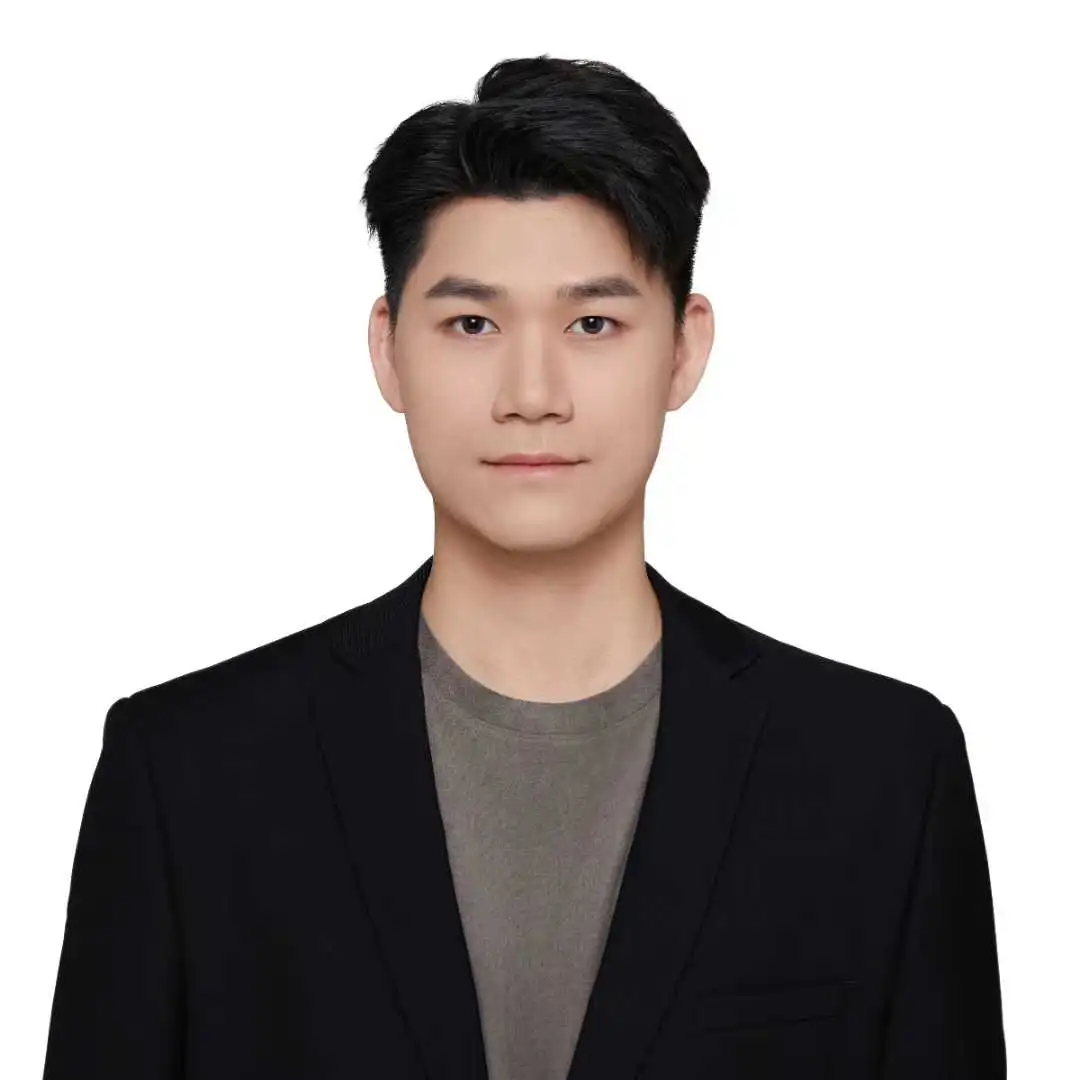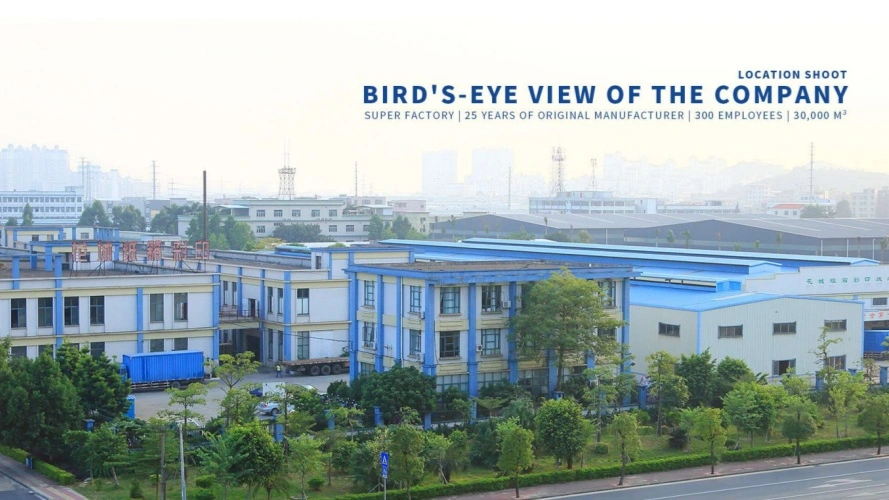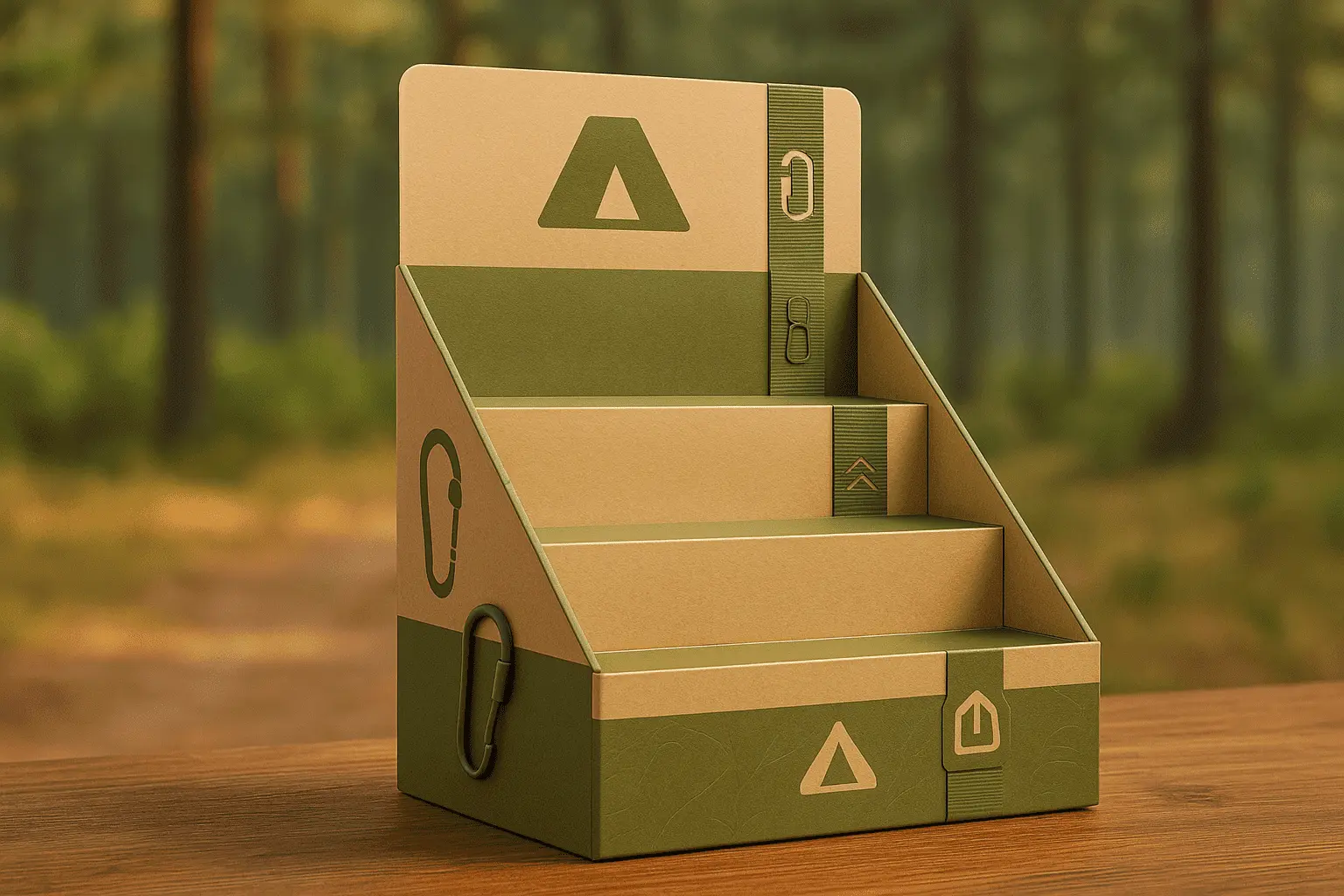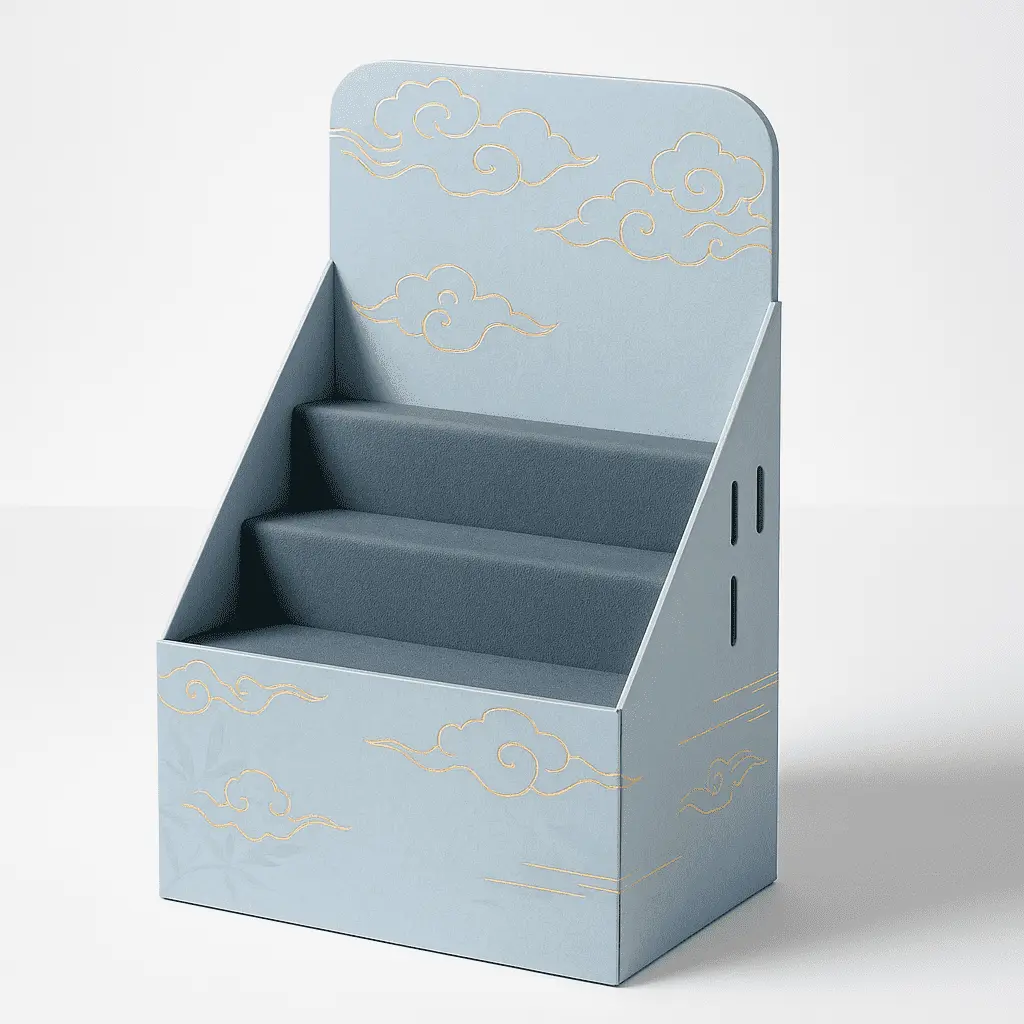The Art and Science of PDQ Display Folding Mechanisms
Innovative Hinge Designs for Seamless Operation
At the heart of PDQ display engineering lies the intricate world of folding mechanisms. These mechanisms are crucial for creating displays that are both compact during shipping and expansive when set up in-store. Innovative hinge designs play a pivotal role in achieving this balance. Engineers employ various types of hinges, from simple piano hinges to more complex living hinges, each chosen based on the specific requirements of the display.
Living hinges, for instance, are often utilized in plastic PDQ displays. These hinges are created by thinning a section of the material, allowing it to flex repeatedly without breaking. This design not only reduces the number of parts needed but also creates a seamless, aesthetically pleasing look. For displays requiring more rigidity, metal hinges or reinforced plastic variants are employed, ensuring the structure maintains its integrity even under frequent use.
Collapsible Structures for Easy Transportation
The ability to collapse and expand easily is a hallmark of well-engineered PDQ displays. This feature not only facilitates transportation but also allows for quick setup in retail environments. Engineers achieve this through carefully designed folding patterns that allow the display to compact into a flat or near-flat state.
One popular approach is the use of accordion-style folding, where multiple panels are connected in a way that allows them to fold neatly against each other. This design is particularly effective for displays with multiple shelves or compartments. Another method involves telescoping structures, where components slide into one another, reducing the overall footprint during transport while still providing ample display space when extended.
Material Selection for Optimal Flexibility and Durability
The choice of materials significantly impacts the performance of folding mechanisms in PDQ displays. Engineers must balance flexibility for easy folding with durability to withstand repeated use. Corrugated cardboard remains a popular choice due to its lightweight nature and recyclability. However, advancements in material science have introduced new options.
High-density polyethylene (HDPE) and polypropylene are increasingly used for their excellent balance of flexibility and strength. These materials can be molded into complex shapes and withstand repeated folding without degradation. For displays requiring extra durability, reinforced fabrics or composite materials may be employed, especially in areas subject to high stress during folding and unfolding.
Load Capacity: Engineering for Stability and Safety
Structural Analysis for Weight Distribution
Ensuring PDQ displays can safely bear the weight of products is a critical aspect of their engineering. This involves comprehensive structural analysis to understand how weight is distributed across the display. Engineers use computer-aided design (CAD) software and finite element analysis (FEA) to simulate various load scenarios, identifying potential weak points in the structure.
The analysis takes into account not just the static weight of products but also dynamic forces that may occur during customer interaction or restocking. This information guides the reinforcement of key areas, such as corners and joints, to prevent buckling or collapse under load. The goal is to create a display that remains stable and secure, even when fully stocked with products.
Innovative Support Systems for Enhanced Load Bearing
To increase the load capacity of PDQ displays without compromising their foldability, engineers have developed innovative support systems. These systems often involve strategically placed reinforcements that engage when the display is unfolded. For example, some designs incorporate folding struts that lock into place, providing additional support to shelves or panels.
Another approach is the use of interlocking tabs or slots that create a rigid structure when assembled. This method allows for a display that is both sturdy when in use and compact when folded. Some advanced designs even incorporate tension-based systems, where the weight of the products themselves helps to stabilize the structure, distributing the load more evenly across the display.
Material Optimization for Maximum Strength
The choice of materials plays a crucial role in determining the load capacity of PDQ displays. Engineers carefully select materials that offer the best strength-to-weight ratio, ensuring the display can support its intended load without becoming too heavy or cumbersome. High-strength corrugated board, reinforced with additional layers or special coatings, is often used for its excellent load-bearing properties and cost-effectiveness.
For displays requiring higher load capacities, materials like reinforced plastics or lightweight metals may be employed. These materials can be shaped into honeycomb structures or ribbed designs, maximizing strength while minimizing weight. The use of composite materials, combining the benefits of different substances, is also becoming more prevalent in high-end PDQ display engineering.
Balancing Aesthetics and Functionality in PDQ Display Design
Integrating Brand Identity into Structural Design
While the engineering aspects of PDQ displays focus on functionality, successful designs must also incorporate aesthetic elements that align with brand identity. This integration begins at the structural level, where the shape and form of the display are conceived to reflect the brand's personality. Engineers and designers collaborate to create displays that are not only structurally sound but also visually appealing and on-brand.
For instance, a luxury cosmetics brand might opt for sleek, minimalist designs with clean lines and high-end materials, while a children's toy brand might prefer vibrant colors and playful shapes. The challenge lies in incorporating these aesthetic elements without compromising the display's folding mechanisms or load-bearing capacity. This often involves creative problem-solving, such as using brand colors in structurally reinforced areas or integrating logo designs into functional components.
Customizable Elements for Versatility
To cater to diverse product lines and changing marketing needs, PDQ display engineering often incorporates customizable elements. These features allow retailers to adapt the display to different products or promotional campaigns without requiring an entirely new structure. Modular designs are particularly effective in this regard, allowing for easy swapping of shelves, headers, or side panels.
Some innovative designs include adjustable components that can be reconfigured to accommodate products of varying sizes. For example, a display might feature shelves that can be repositioned at different heights or dividers that can be moved to create compartments of different widths. This versatility not only enhances the display's functionality but also extends its lifespan, making it a more cost-effective solution for retailers.
Sustainable Design Practices in PDQ Engineering
As environmental concerns become increasingly important to consumers and businesses alike, PDQ display engineering is evolving to incorporate more sustainable practices. This shift involves not only the use of eco-friendly materials but also designing displays with their entire lifecycle in mind.
Engineers are now focusing on creating displays that are easily recyclable or biodegradable at the end of their useful life. This might involve using single-material construction to facilitate recycling or selecting materials that have a lower environmental impact. Additionally, designs that minimize waste during production and assembly are gaining prominence. Some innovative approaches include displays that can be repurposed for different products or campaigns, reducing the need for frequent replacements and thereby lowering the overall environmental footprint of retail marketing efforts.
Conclusion
PDQ display engineering is a multifaceted discipline that combines structural integrity, creative design, and practical functionality. The intricate folding mechanisms and robust load-bearing capacities of these displays are testament to the ingenuity of engineers and designers in the field. As retail environments continue to evolve, so too will the engineering behind PDQ displays, with a growing emphasis on sustainability, versatility, and brand integration. By mastering the balance between form and function, PDQ displays will remain an indispensable tool in the world of retail marketing, efficiently showcasing products while enhancing the overall shopping experience.
Contact Us
Ready to elevate your retail display game? At Guangzhou Huadu Fetching Color Printing and Packaging Co., Ltd., we specialize in creating custom PDQ displays that combine cutting-edge engineering with eye-catching design. Whether you need a solution for a new product launch or want to revamp your existing displays, our team of experts is here to help. Contact us today at support@fetchingprinting.com to discuss how we can bring your vision to life with our innovative PDQ display solutions.





